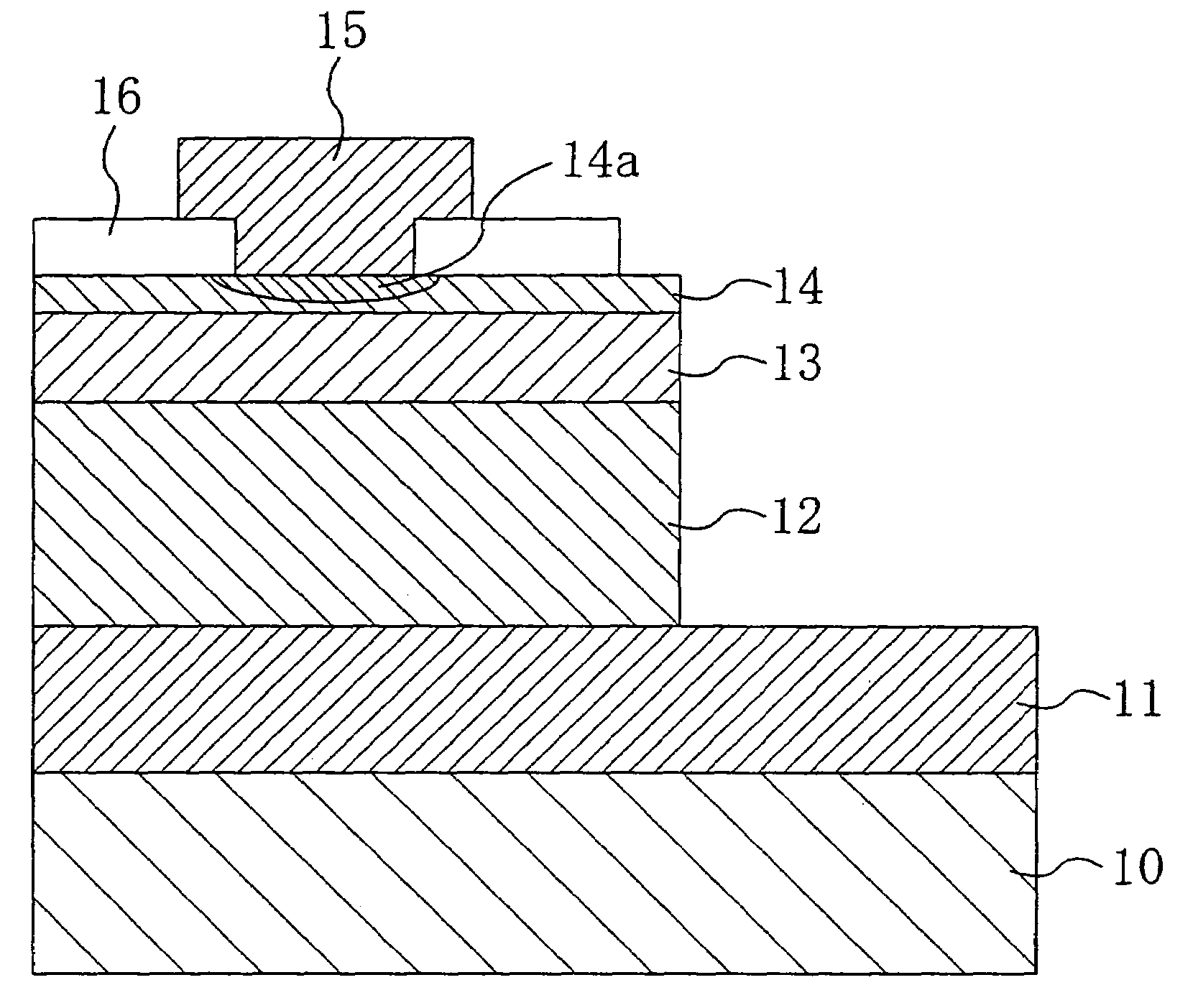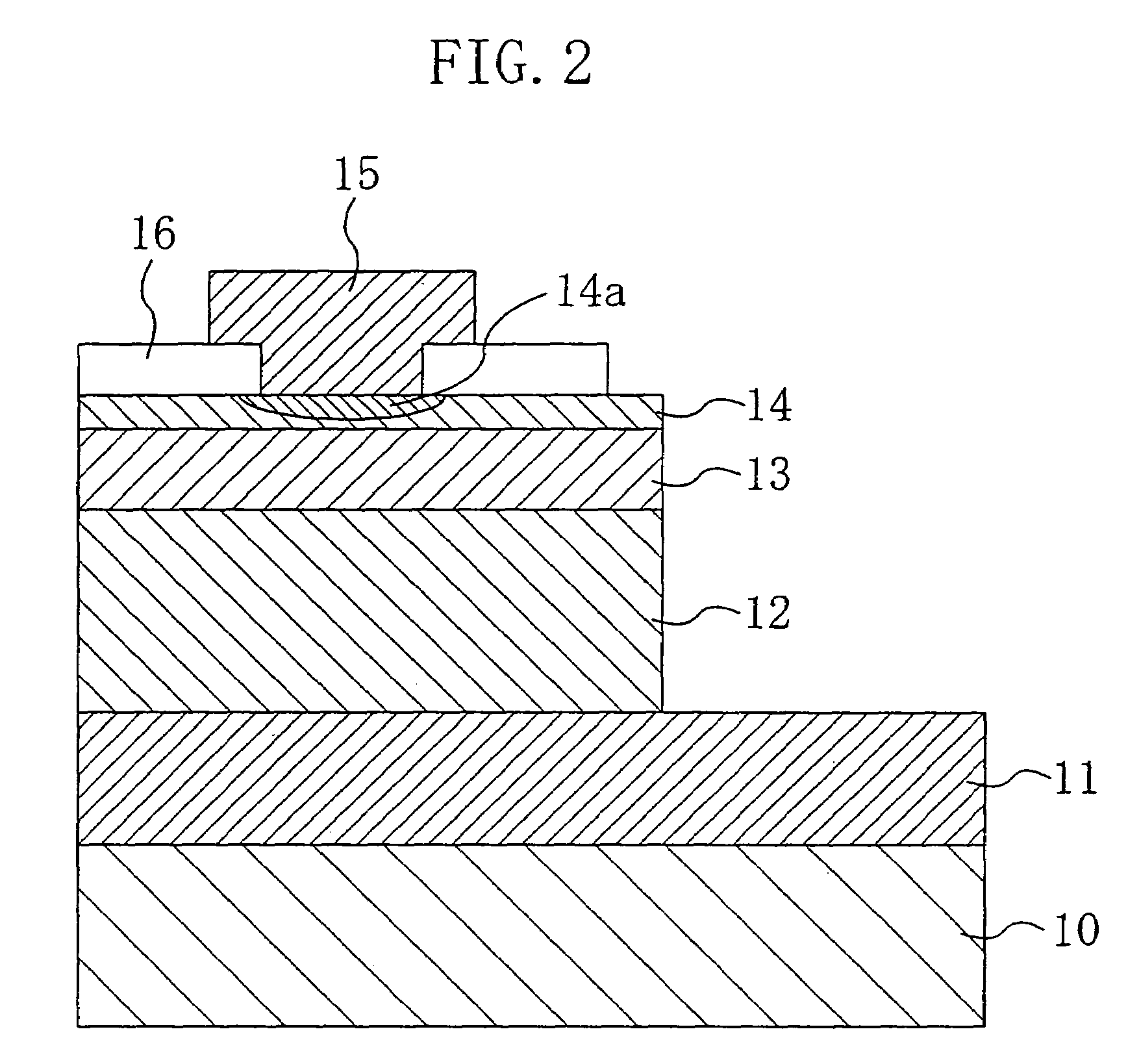Heterojunction bipolar transistor having reduced driving voltage requirements
a technology of heterojunction bipolar transistor and driving voltage, which is applied in the manufacture of semiconductor/solid-state devices, semiconductor devices, electrical apparatus, etc., can solve the problems of deteriorating characteristics, deteriorating electric characteristics, and deteriorating high-frequency characteristics of hbt, so as to improve high-frequency characteristics, reduce the recombination current of the emitter-base, and reduce the effect of low-voltage driving
- Summary
- Abstract
- Description
- Claims
- Application Information
AI Technical Summary
Benefits of technology
Problems solved by technology
Method used
Image
Examples
embodiment 1
[0056]FIG. 3A is a view showing the C content, the Ge content, and the concentration of boron (B) as an impurity, of the first and second base regions in Embodiment 1. FIG. 3B is an energy band diagram over the emitter region—base region—collector region during voltage application in Embodiment 1. Note that in FIG. 3A, representation of the concentration of an n-type impurity is omitted.
[0057]As shown in FIG. 3A, in this embodiment, the Ge content is constant (for example, 26.8%) throughout the first base region 12 and the second base region 13. The C content is 0.91% in the first base region 12 and 0.35% in the second base region 13, for example. In this case, therefore, the first base region 12 is made of a SiGe0.268C0.0091 layer, while the second base region 13 is made of a SiGe0.268C0.0035 layer.
[0058]The band gap of the SiGe0.268C0.0091 layer is about 0.95 eV, while the band gap of the SiGe0.268C0.0035 layer is about 0.92 eV. When two SiGeC layers having the same Ge content are...
embodiment 1 -
-Experiment Data in Embodiment 1-
[0060]FIG. 12 is a view, shown in the form of a table, of parameters of samples used for experiments for confirmation of the effects of the present invention. In FIG. 12, S denotes the thickness of the Si cap layer 14, D1 denotes the thickness of the first base region 12, D2 denotes the thickness of the second base region 13. NG1, NC1, and NB1 respectively denote the Ge content, the C content, and the boron concentration of the first base region 12. NG2, NC2, and NB2 respectively denote the Ge content, the C content, and the boron concentration of the second base region 13.
[0061]FIG. 13 is a view showing data of bias voltage-current characteristics measured for the samples shown in FIG. 12. As is found from FIG. 13, in sample No. 1 that does not include a layer having a low C content (second base region), the gradient of the voltage-current characteristics is slow, indicating that the recombination current is large. In sample No. 2 in which the thick...
embodiment 2
[0063]FIG. 4A is a view showing the C content, the Ge content, and the concentration of boron (B) as an impurity, of the first and second base regions in Embodiment 2. FIG. 4B is an energy band diagram over the emitter region—base region—collector region during voltage application in Embodiment 2. Note that in FIG. 4A, representation of the concentration of an n-type impurity is omitted.
[0064]In this embodiment, the Ge and C contents of the first and second base regions 12 and 13 have been adjusted so that the band gaps of the two base regions are equal to each other. To attain this, the Ge content is not made constant throughout the first and second base regions, but the Ge content of the first base region 12 should be larger than that of the second base region 13. Specifically, when the SiGeC layer is represented by general formula Si1-x-yGexCy and the difference of the C content between the first and second base regions 12 and 13 is denoted by Δy, the difference Δx of the Ge cont...
PUM
 Login to View More
Login to View More Abstract
Description
Claims
Application Information
 Login to View More
Login to View More - R&D
- Intellectual Property
- Life Sciences
- Materials
- Tech Scout
- Unparalleled Data Quality
- Higher Quality Content
- 60% Fewer Hallucinations
Browse by: Latest US Patents, China's latest patents, Technical Efficacy Thesaurus, Application Domain, Technology Topic, Popular Technical Reports.
© 2025 PatSnap. All rights reserved.Legal|Privacy policy|Modern Slavery Act Transparency Statement|Sitemap|About US| Contact US: help@patsnap.com



